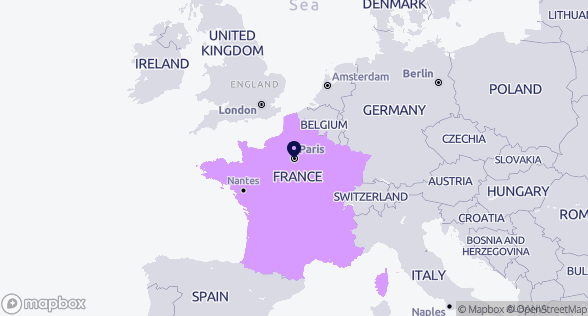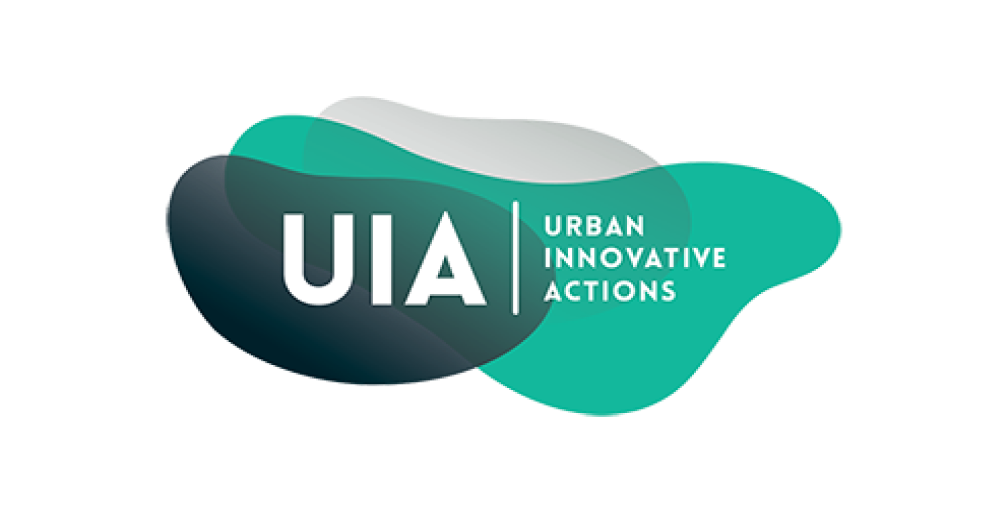
Paris
France
This is a case study as part of an UIA report. You can access all of the project's resources on its project collection page.
1. Short project description
Dense urban areas are subject to dynamic and urgent challenges. Urban Heat Island and heatwaves pose a threat to residents’ comfort, due to extreme microclimate conditions. In this framework, urban parks represent effective strategies towards more livable and comfortable urban areas. In particular, small pocket parks can contribute to the mitigation of such challenges in every neighborhood. Indeed, they are near residents, allowing large population groups to benefit from the advantage of living in green areas.
Paris is experiencing climate change impacts: heatwaves compounded by the urban heat island effect and floods caused by the Seine overflowing its banks or by rainfall runoff after heavy rains. Droughts are also expected, a fact that can impact water resources. As a result, the city and its population are becoming increasingly vulnerable.
The Climate Adaptation strategy of Paris aims at making the city more resilient, more attractive, and a nicer place to live. The strategy consists of four requirements and scales of intervention: protect Parisians from extreme climate events, ensure the supply of water food, and energy, apply more sustainable city planning to live with climate change and foster new lifestyles and boost solidarity.
For the above to be accomplished, the Paris Climate Adaptation Plan expands nature reserves and water bodies in the city and creates «cool islands and paths». The objective is to bring shade and mitigate heat with the development of small «urban forests» and more vegetation on roofs, streets, and squares.
The UIA project (OASIS) is fine-tuned to the Climate Adaptation Plan of Paris; it converts schoolyards into «cool islands» at the neighborhood scale through nature-based solutions and eco-innovative materials with a low carbon footprint and improved thermal performance. Schoolyards by being covered by asphalt and impervious surfaces enhance the heat island effect; this is because the evapotranspiration process, which acts as a cooling mechanism in cities, is suppressed.
The project follows a co-design and participatory process, leading to the engagement and mobilization of city residents of all ages. The latter is a critical precondition for developing a sense of co-responsibility for the public space.
The innovation of the project refers to materials (for infiltration, thermal performance, and low carbon footprint), rainwater recovery systems and Nature-Based Solutions adapted to risks (for shading, evapotranspiration, and drought resistance).
OASIS proposes the emergence of new models of micro-local governance, with methods for local actors’ empowerment.
The UIA project is based on a partnership between the City of Paris, higher education and research Institutes, the Architecture, Urban Planning, and Environment public service, and the Education Association of Paris. Support regarding meteorological and climatological issues is provided by Meteo France.
The output of the project so far is both tangible through a network of ten schoolyards converted to cool islands and intangible by means of a new municipal approach for urban space interventions and governance.
Finally, the upscaling of the project to the network of 656 schools and 115 high schools managed by the city, reflects a major challenge for increasing the adaptive capacity of the city and its resilience.
2. Paris and Just Transitions
Paris Climate Adaptation plan aims at 300 additional cool islands by 2030, “Schoolyards Oases”, with vegetation and pervious surfaces, 20,000 new trees planted by 2030. Furthermore, it aims at better thermal comfort for the city dwellers and to social cohesion by creating spaces for social interaction.
The OASIS project is closely aligned to the Paris Climate Adaptation Plan; it supports in a catalytic manner implementation by giving space to Climate-friendly urban planning, namely eco-innovative products and Nature-Based Solutions. At the same time, it promotes a new model of micro-local governance, with interventions at the neighborhood scale and with methods for local actors’ empowerment. In practical terms, the emerging green sector rolls out to a new model for urban planning, aligned to the priority for green and sustainable development and with a strong social dimension.
The UIA project demonstrates the capacity to intervene in dense cities with limited open spaces and to green the urban fabric through smart solutions at the neighborhood scale.
The Adaptation Plan of Paris to climate change aims at 300 additional cool islands by 2030. To this end, a potential barrier for the emerging green sector of the OASIS project is continuity in terms of political support as well as funding availability from the Municipal budget and other external sources of funding.
A barrier in the field of emerging green sectors is the capacity of the Municipal personnel to adopt innovative solutions and measures. This is a process usually met in public operations and management, also at the Municipal level; life-long training and reskilling programs can gradually remove the barrier. Paris is prioritizing municipal employees as part of its approach, linking to point 5 of our report Roadmap.
An additional barrier is a difficulty to change the management practices of the Municipal personnel regarding the type and characteristics of urban regenerations projects as well as procurement practices, especially if they relate to eco-innovative products and materials.
The limited interest of the public may also run counter to the integration of emerging green sectors. Leveraging the full potential of eco-innovative products and Nature-Based Solutions across the entire fabric of the city requires an evidence base advocating their public benefits and engaging with stakeholders for policy development and urban planning.
Awareness-raising is also important from an early stage of the project; to this end, the city of Paris has created the Climate Academy, an establishment in support of knowledge sharing and awareness-raising on climate change and its impacts on cities and their communities. The Academy constitutes a major step towards the development of a climate-sensitive new generation, susceptible to green innovation and practices.
Finally, a barrier may be the reluctance of the private sector to promote investments along the line of the UIA project, as the investment may not be in their core business or they do not recognize a profitable market. The barrier seems to be removed, because of the European, and international, shift to climate-friendly urban projects. European Commission policies on Climate (Climate Adaptation, Green Deal, Carbon Neutral and Smart Cities, Circular Economy, etc.) along with the Climate Adaptation Plan of Paris, have facilitated this shift. Recent studies at the European level, demonstrate that the field of climate-friendly urban planning (including the associated green sectors) gains strong public interest while it is a growing and profitable market.
3. How does the UIA intervention support Just Transitions?
The UIA intervention supports the emerging green sector of Climate-friendly urban planning by demonstrating successful examples of local greening actions. In particular, it promotes the merit of eco-innovative products and materials to create cool islands as well as solutions for bringing nature into the city (for instance through shading and rainwater recovery).
OASIS, by being a dynamic partnership, involves residents, institutions, stakeholders, and businesses and exposes eco-innovative products and Nature-Based Solutions to city dwellers of all ages. It thus develops a culture towards green sectors, a fact that facilitates strongly their integration into city practices towards green transition.
OASIS shows the types of jobs needed for green transition and climate-friendly urban planning: architects and engineers acquainted with eco-innovative materials and Nature-Based Solutions, experts in ecosystem services and green infrastructure, and urban climate scientists.
The project also shows what type of businesses are needed to support climate adaptation at the urban scale: architectural firms specializing in green design principles, companies producing and/or installing eco-innovation products, and Nature-Based Solutions and consultants/firms for ecosystem services and green infrastructure.
Taken the above, it would be important if the city authorities devised skilling and reskilling programs to support the new requirements for the labor force, thus safekeeping social cohesion by sustaining jobs and creating new ones.
4. Keys to success
Analysis of the Paris case identifies several factors that have helped the successful implementation of the project. These factors are:
a. A dynamic Climate Adaptation Plan
The Climate Adaptation Plan of Paris gives space for innovative projects in support of climate-friendly city planning; it also includes several types of action, from improving knowledge to experimentation and from raising awareness to mobilizing city dwellers and stakeholders.
b. Shaping a culture towards green sectors
The municipality of Paris supports the Climate Academy, a novel initiative tasked to prepare a generation of active citizens that live sustainably.
c. Fostering collaboration across the full spectrum of stakeholders
The UIA project has established a collaboration framework for such stakeholders as urban planners, utility operators, municipal officials, and city-dwellers.
d. Public procurements of innovative solutions
The municipality of Paris has taken advantage of the provisions of this type of procurements given using eco-innovative products. It is mobilising public purchasing power to shape business behaviours, in line with our Roadmap point 5.
e. Micro-local governance
The UIA project is implemented at the neighborhood scale and in cooperation with the residents who contribute to the co-design of green solutions.
5. Upscaling and replication potential
The upscaling of the UIA project reflects considerable potential taken that Climate-friendly urban planning (for instance through the development of cool islands) is at the center of the Climate Adaptation Plan of Paris. Preconditions for the upscaling are funding, the collaboration with a wide array of stakeholders from both the public and private sectors, and the perseverance of the collective model for co-design and planning at the local scale.
It is important to note that the municipalities of Barcelona and Paris have worked out a cooperation framework based on their UIA projects for climate adaptation at the urban scale. Through cooperation, knowledge transfer and experience sharing takes place. This type of cooperation may roll out as a model for the replication of Climate-friendly urban planning in more European cities; as a matter of fact, around 200 cities in France have expressed their interest in the OASIS project. To this end, a wide network of cities entrusting climate-friendly urban planning and providing space for emerging green sectors is likely to be developed.
Finally, it is important to note that the European Commission policy for the adaptation of cities to climate change and their transformation to Climate Neutral ones as early as 2030, sets a promising framework for the said emerging green sector.
About this resource
The Urban Innovative Actions (UIA) is a European Union initiative that provided funding to urban areas across Europe to test new and unproven solutions to urban challenges. The initiative had a total ERDF budget of €372 million for 2014-2020.
Similar content






Want to replicate this urban practice in your city?
Apply to an EUI City-to-City Exchange
Connect with a peer city who can bring you solutions and expertise and apply together to receive EUI support
More infos on EUI websiteBrowse existing Innovative Actions looking for Transfer Partners and cities willing to do a City-to-City Exchange looking for peers